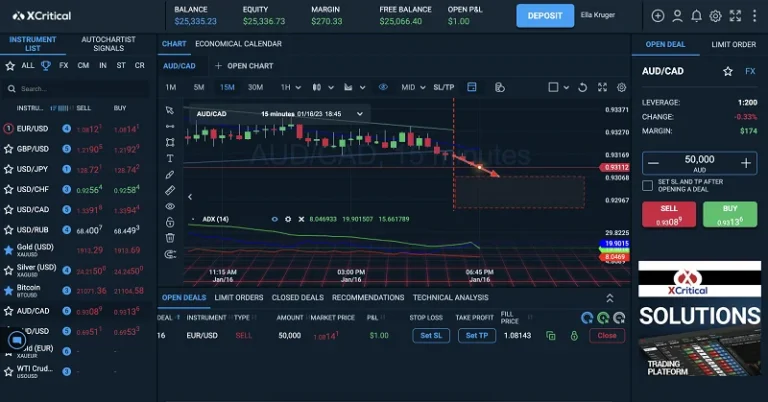Due to the enormity of the forex market, which currently experiences daily transaction volumes in excess of six billion U.S. Dollars per business day, foreign exchange market liquidity has no equal in any other capital market anywhere in the world in terms of liquidity available to traders in the major currency pairs. Perhaps the best-known core liquidity providers are the institutions that underwrite initial public offerings (IPOs). When a company goes public on a stock exchange, it selects an underwriter to manage the process. The underwriter buys the stock directly from the company and then resells it in large batches to large financial institutions, which then make the shares available directly to their clients. A liquidity provider-based broker typically offers direct market access, enabling traders to access liquidity from multiple sources.
In today’s highly dynamic forex world, having access to the appropriate tools and information can make all the difference for traders and institutions alike. Two common terms used within this context include “FX Aggregator” and “Liquidity Provider,” although these may appear complex at first. But they play critical roles in keeping the forex market functioning smoothly – in this article, we aim to demystify these terms so they are easily understandable by traders and institutions alike. To understand the role of liquidity providers, it is crucial to comprehend the concept of liquidity itself. Liquidity refers to the ease with which an asset can be bought or sold without causing a significant change in its price.
Liquidity providers focus on supplying liquidity directly to the market, primarily through DMA models. On the other hand, market makers act as intermediaries and quote bids and ask prices for specific instruments, often operating in OTC markets. They provide liquidity, facilitate trading, and contribute to price discovery. One of the key benefits of using an LP is that they offer traders access to deep liquidity pools, ensuring that there is always enough supply and demand in the market. This means that traders can execute trades quickly and at the best possible prices. LPs also offer a wide range of trading tools and platforms, giving traders access to different trading strategies and styles.
- It’s nicknamed “the cable” since, in the distant past, quotations were made through the transoceanic cable.
- Once the forex broker chooses the right liquidity provider, the liquidity provider himself will run a risk analysis on that specific EUR/USD order.
- This is a hybrid situation where the broker passes through some transactions, while taking the other side of others.
- Another aspect that tempts people to Forex trading is the possibility of gaining huge rewards.
- Such a company relies on its own order book, matching bid and ask orders placed by its clients.
The best and the most popular professional FOREX/Crypto trading platform White Label solution tailored specifically to your brand. A complete trading platform solution packed with a full range of features to cater to each and every investment preference https://www.xcritical.in/ imaginable. A financial technology provider with cutting-edge aggregation software, ultra-low-latency connectivity, institutional grade hosting solutions. Data centre facilities providing housing for servers with managed services to support our clients.
Binary Options do not use live quotes, but mainly an algorithm to trade using expiration time. Therefore, binary options mainly use binary options broker liquidity provider in forex trading software with no need for any separate liquidity provider. In this part, we gather common questions about Forex brokers’ liquidity providers.
Liquidity providers offer retail clients several currency pairs at competitive bid/ask prices. The primary liquidity providers in the over the counter Interbank forex market are market makers operating at major commercial banks and some investment banks. Liquidity providers are typically large financial institutions such as banks, hedge funds, and other market makers. These entities offer deep pools of capital, which they use to buy and sell currencies in the forex market.
Let’s clear things up – what is Forex liquidity, and how this notion works within the industry with more than $7 billion of trading volumes. Online forex brokers typically connect with more than one liquidity provider to improve their dealing rates and spreads. By connecting with multiple liquidity providers, the broker can offer their customers the best price obtainable from several liquidity providers.
Liquidity providers enable traders, especially retail traders, to participate in the Forex market. Individual traders typically lack access to Tier-1 liquidity directly and these providers serve as essential intermediaries between themselves and this source. With an ECN/STP broker, the trader can be sure that the trade is being executed ultimately by a Tier 1 liquidity provider with the executing forex broker not taking any part or side in the transaction. When a broker understands how liquidity provider works, it’s high time to apply to reliable companies, getting a jumpstart on the market. Multiple liquidity providers ensure a broad array of quotes, better pricing, and minimal slippage – increasing market efficiency. Look for a provider with a solid reputation and a reliable forex industry track record of reliability.

Before diving into the world of Forex trading, there are several key considerations that every trader should be aware of. These include the importance of proper research and education and effective risk management strategies. Liquidity is the ability for a security to be bought and sold quickly enough without this exchange rate or market price being affected. Swissquote is a well-established and trusted entity that has strong relationships with hundreds of financial institutions around the world. Low liquidity is often experienced in several different markets, especially the real estate market, with transactions consisting of more than two- or five-day settlement periods, with other transactions taking years. Select the best liquidity aggregation (e.g., PrimeXM, OneZero) and liquidity venues (MetaTrader 4/5, DX Trade, B2Trader) to connect to liquidity pools.
Low liquidity leads to the possibility of manipulations when traders influence the quotes. Forex liquidity plays one of the crucial roles while looking for a reliable brokerage company. Having a 250 billion USD average daily volume, the Australian Dollar quoted against the U.S. The dealing spread for this currency pair is generally between 2.5 and 4.5 pips. This currency pair is rather sensitive to commodities prices since Australia is a large producer of raw materials.
An FX Aggregator and Liquidity Provider both play important roles in the functioning of the forex market. In the world of forex trading, liquidity providers play a crucial role in ensuring the smooth functioning of the market. They are the entities that offer liquidity, enabling traders to buy or sell currencies at any given time. Understanding who these liquidity providers are and what they do is essential for any aspiring forex trader.
The dealing spread is charged for providing this liquidity as a service. They quite literally make a market for an asset by offering their holdings for sale at any given time while simultaneously buying more of them. But it also allows investors to buy shares whenever they want to without having to wait for another investor to decide to sell. Liquidity providers may earn revenue through the bid-ask spread or by charging commissions on trades, depending on their business model. Here are some characteristics you should look for when searching for a liquidity FX provider.
In a general sense, fiat currencies are characterized by absolute liquidity, as any time holders are able to exchange them for goods, services, other currencies, or other financial instruments. Meanwhile, the other sense appears when money is compared to money – i.e., one currency is more liquid than the other. Fourth on our list is GBP/USD or the Pound Sterling quoted against the U.S. This pair is also sometimes called “Cable” since quotations in this currency pair were historically made via the transoceanic cable. Typically, dealing spreads in this pair are between two and four pips wide, and it tends to have a higher volatility and a lower trading volume than EUR/USD, for example.


